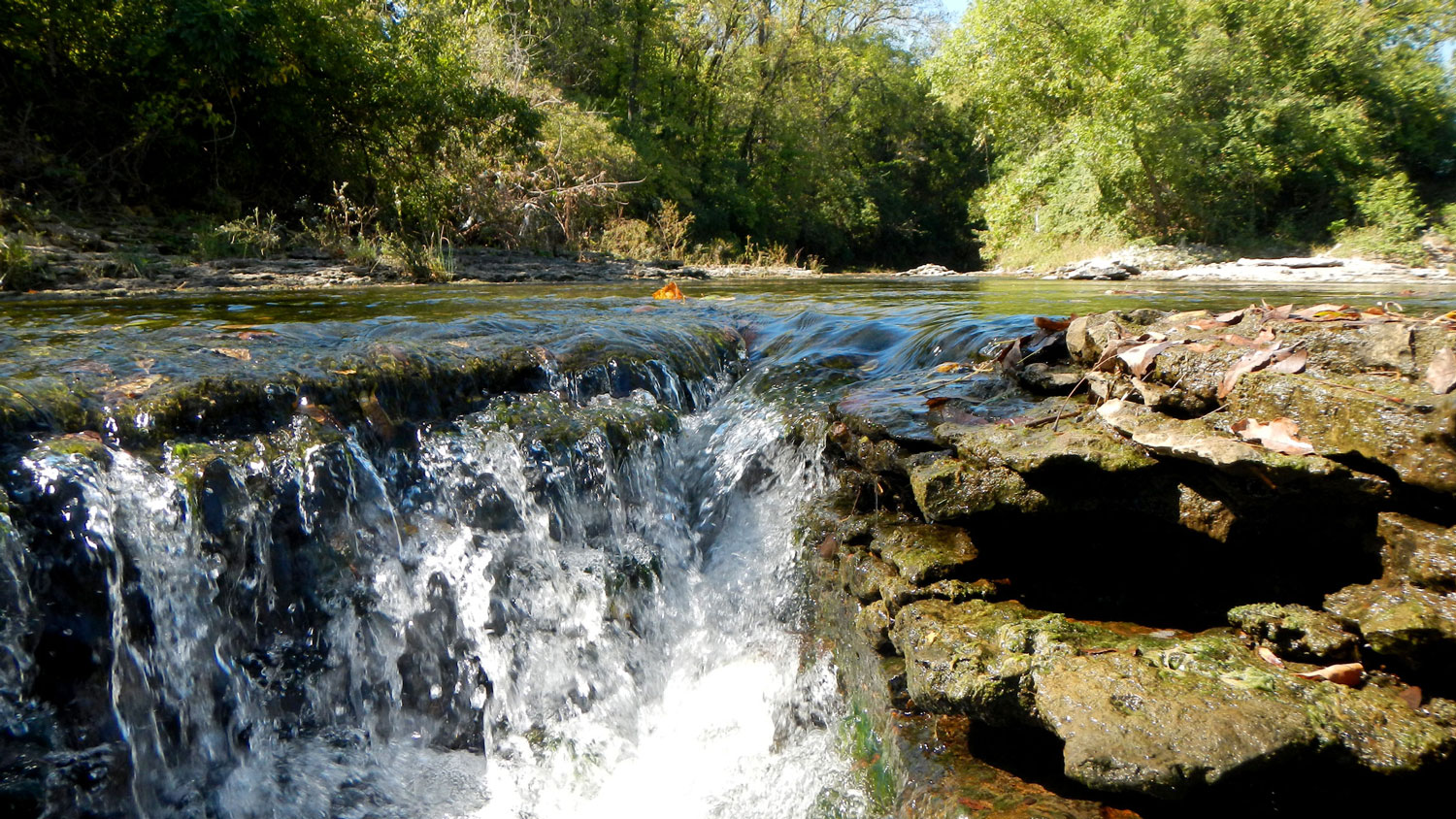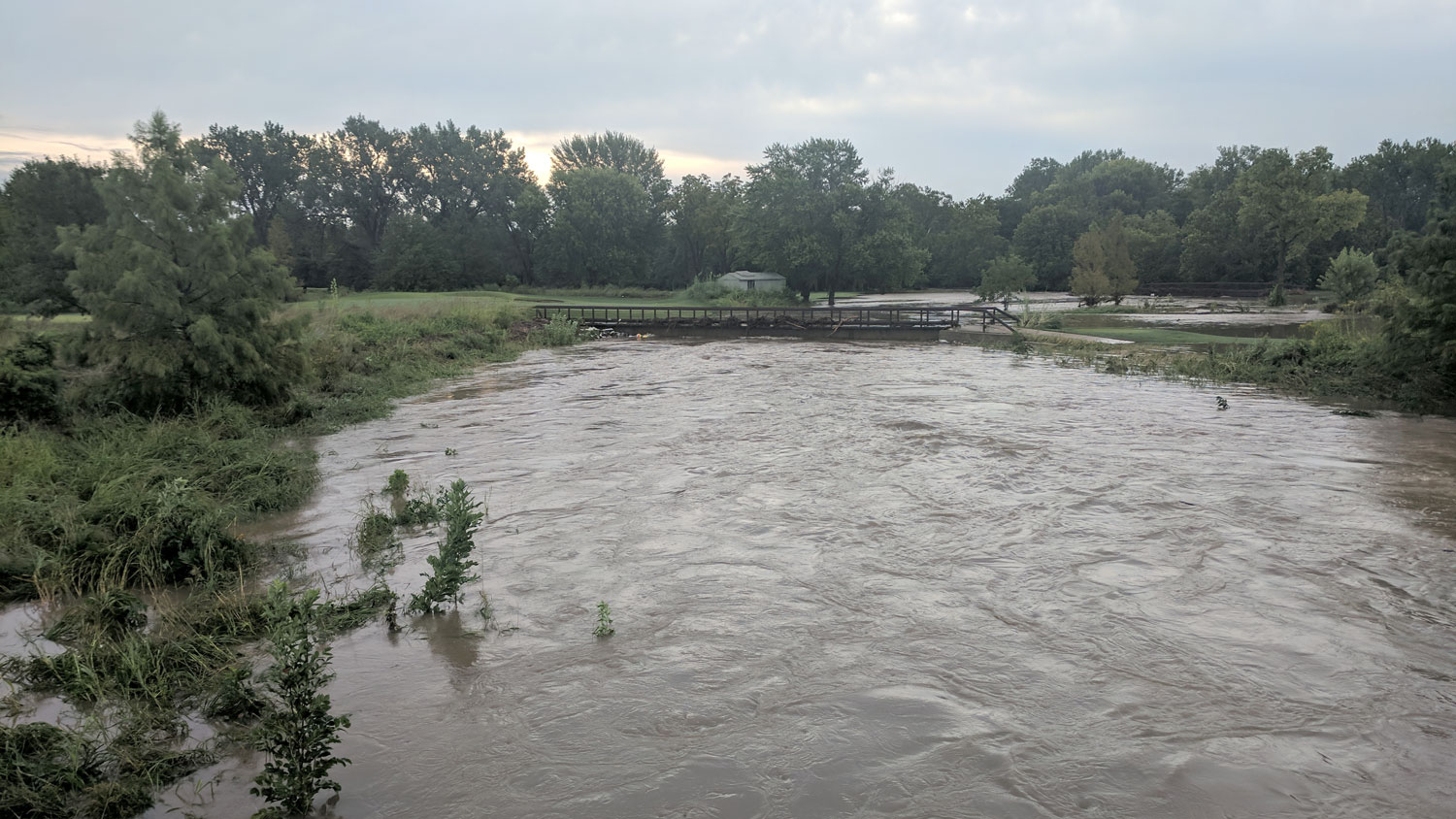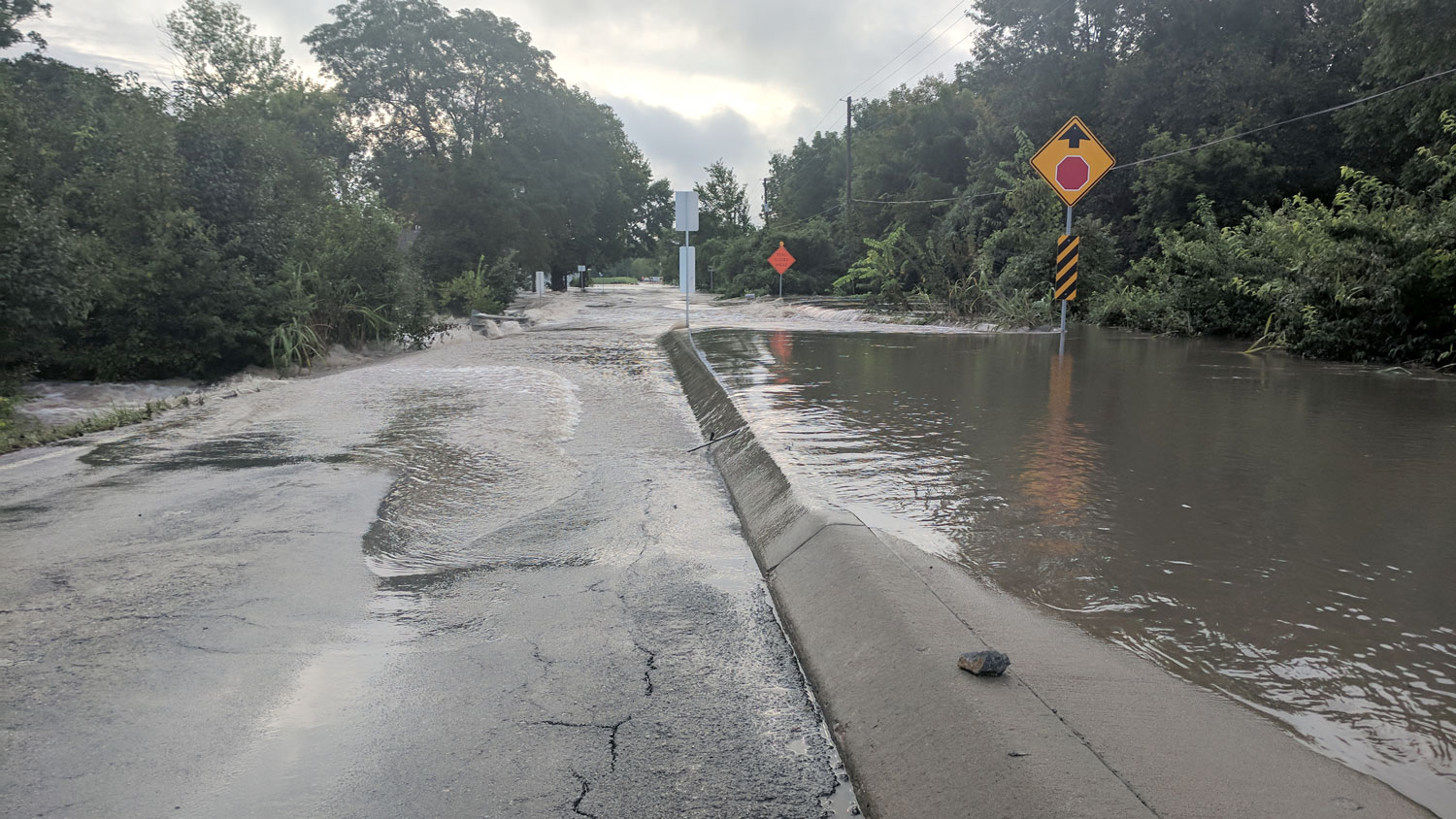Flooding + Stormwater
Flooding + Stormwater
The city’s storm drainage system includes more than three million linear feet of storm sewer pipe, designed to collect water runoff from rainstorms and melting snow and move it away from buildings and streets.
Crews inspect safety grates on inlets and box culverts. Blockage cleanouts and repairs ensure water flows directly into the storm drainage system.
It is against Overland Park ordinance to place leaves or dispose of household hazardous waste in the storm drainage system.
Report a Problem
Report a flooding problem by submitting a request through the city’s online customer service tool, OPCares.
Contact
Engineer of the Day
913-895-6223
[email protected]

StormWatch
StormWatch is the City’s weather and flood warning system.
It uses remote weather monitoring stations to pull in rainfall data, stream levels, temperatures, pavement status, and more to provide information about current creek conditions. You can access the same information we use, online.

Residential Flooding
About seven percent of the total land area in Overland Park is in a Federal Emergency Management Agency-designated floodplain.
Although much of this land includes parks, streamway corridors and open space areas, some older neighborhoods are in a floodplain. More than 400 buildings in Overland Park are in a floodplain.
Overland Park offers two important tools to help homeowners and prospective homeowners when considering how stormwater affects properties. The floodplain map can help determine if your home or business is in a flood zone. You can also use the flood map information service by calling 913-895-6223 or emailing [email protected].
Flood Insurance
Federal law requires you purchase flood insurance for any building in the floodplain financed by a federally-backed loan. Overland Park enforces various floodplain regulations that require residents to purchase flood insurance through the National Flood Insurance Program.
To find out what flood zone your home or business is in, you can use the city’s interactive floodplain map or contact the Engineer of the Day at 913-895-6223 or [email protected].
Many buildings that flood are not in a mapped flood zone. You can buy flood insurance through a local insurance agent, no matter what flood zone you live or work in. Rates are set by the National Flood Insurance Program. Because Overland Park participates in FEMA’s community rating system program, residents can receive a discounted rate on this insurance.
Floodplain Map

Flooding Safety
Floods are one of the most common natural disasters in the U.S.
The following precautions can save a life in a flood.
Do not walk through flowing water. Drowning is the number one cause of death during flash floods. Currents can be deceptive. Six inches of moving water can knock you off your feet.
Turn around, don’t drown. Do not drive through flood waters. As little as 12 inches of rapidly moving water can wash a vehicle off the road. There may be hazards under the water you cannot see.
Stay away from power lines and electrical wires. After drownings, electrocution is the second most frequent cause of flood deaths. Stay out of flooded basements. Water may be energized due to contact with a house electrical panel or other source.
Repairing Your Home After a Flood
If your home has flooded, the City and your insurance agent need to inspect your property to document damage before repairs are made. A floodplain development permit or building permit may be required for repairs. The Red Cross provides extensive advice on how to make repairs to flood-damaged buildings.
If your property is in a floodplain:
- Purchase flood insurance. Most homeowner’s insurance doesn’t offer flood insurance as part of the basic policy. Contact your insurance agent or visit www.floodsmart.gov for more information.
- Elevate your furnace, water heater and electric panel, and exterior air conditioning unit.
- Consider having “check valves” installed to prevent flood water or sanitary sewer flows from backing up into the drains of your home.
- Don’t finish your basement. If you do, use flood-resistant materials.
Avoid building in the floodplain. When possible, find a new building outside of the floodplain.
If it’s not possible to build outside the floodplain, your project will need to be property elevated and your mortgage company will require flood insurance. In certain cases, you may want to consider elevating or relocating your home above or out of the floodplain. If your home is substantially damaged for any reason (flooding, wind, fire, etc.), your flood insurance policy may include “Increased Cost of Compliance” coverage to help offset these costs.
Grading, filling, new construction, modifications to your home, and other types of work in the floodplain require a floodplain development permit.
